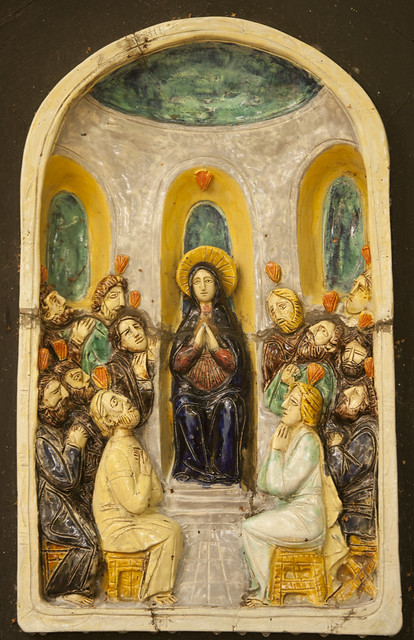 |
| The Descent of the Holy Ghost on the Apostles: from the Rosary Walk at the Shrine at Aylesford, the destination of a traditional walking pilgrimage this weekend. |
Pentecost comes from the Greek pentekoste, which means “fiftieth.” The ancient Jewish feast of Pentecost (as it is occasionally called in the Greek Old Testament) is also called the Feast of Weeks or of First Fruits, in Hebrew, Shavuot. In the year of Jesus’ passion, this was also 50 days after the Resurrection (more or less) and was the occasion of the coming of the Holy Spirit on the apostles. The Ascension had taken place forty days after the Resurrection, and Pentecost followed a nine-day period of prayer and interior preparation for this event by the apostles, in the Upper Room, the Cenacle, in Jerusalem.
Holy Scripture and the Church’s liturgical calendar alike rejoice in numerology, the symbolism of numbers. Forty is a period of preparation: the Hebrews were forty years in the desert before they came to the Promised Land; Jesus, like Moses and Elijah before key moments of their missions, spent forty days in the desert in preparation for his public ministry; we have forty days of Lent. Fifty is associated with completion and eternity: the fifty days of Eastertide represent, in a sense, the end of the story, the “happily ever after,” as well as the period between Easter and Pentecost.
No comments:
Post a Comment